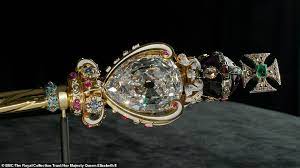APA-Johannesburg (South Africa) While the global gaze is on this weekend’s eagerly awaited coronation of the United Kingdom’s King Charles III, the event has attracted attention of a different nature in South Africa – renewed calls for the return of the world’s largest diamond allegedly stolen by the British and now part of royal jewels.
King Charles will be crowned at London’s Westminster Abbey on May 6 in a historic event expected to be attended by scores of world leaders and to involve thousands of military personnel in a mile-long procession through central London.
As with all other British royal events, the coronation has been the flavour of the month amid a media frenzy and excitement by leaders in Africa and other parts of the world who have been invited to attend the ceremony.
However, South African activists are not as excited, with the pomp and fanfare accompanying the coronation a stark reminder of the plunder of African resources by the British during colonial times.
They have launched a petition calling for Britain to return the world’s largest diamond, known as the Star of Africa, which is set in the royal sceptre that King Charles III will hold during the coronation ceremony.
Led by Johannesburg lawyer and activist, Mothusi Kamanga, the activists want London to return Africa’s looted treasures over the centuries.
The campaigners said the diamond, which weighs 530 carats, was discovered in South Africa in 1905 and was presented to the British monarchy by the colonial government in the country while under British rule.
“The diamonds need to come to South Africa. They are a sign of our pride, our heritage and our culture,” Kamanga said.
Kamanga is promoting an online petition which has gathered some 8,000 signatures seeking for the diamond’s return to South Africa.
“I think generally the African people are starting to realise that to decolonise is not just to let people have certain freedoms, but it’s also to take back what has been expropriated from us.”
Officially known as Cullinan I, the diamond in the royal sceptre was cut from the Cullinan diamond, a 3,100-carat stone that was mined near Pretoria.
A smaller diamond cut from the same stone, known as Cullinan II, is set in the Imperial State Crown which is worn by British monarchs on ceremonial occasions.
Along with the sceptre, it is kept with the other crown jewels in the Tower of London.
A replica of the whole Cullinan diamond, which is about the size of a man’s fist, is displayed at the Cape Town Diamond Museum in South Africa.
NM/jn/APA


